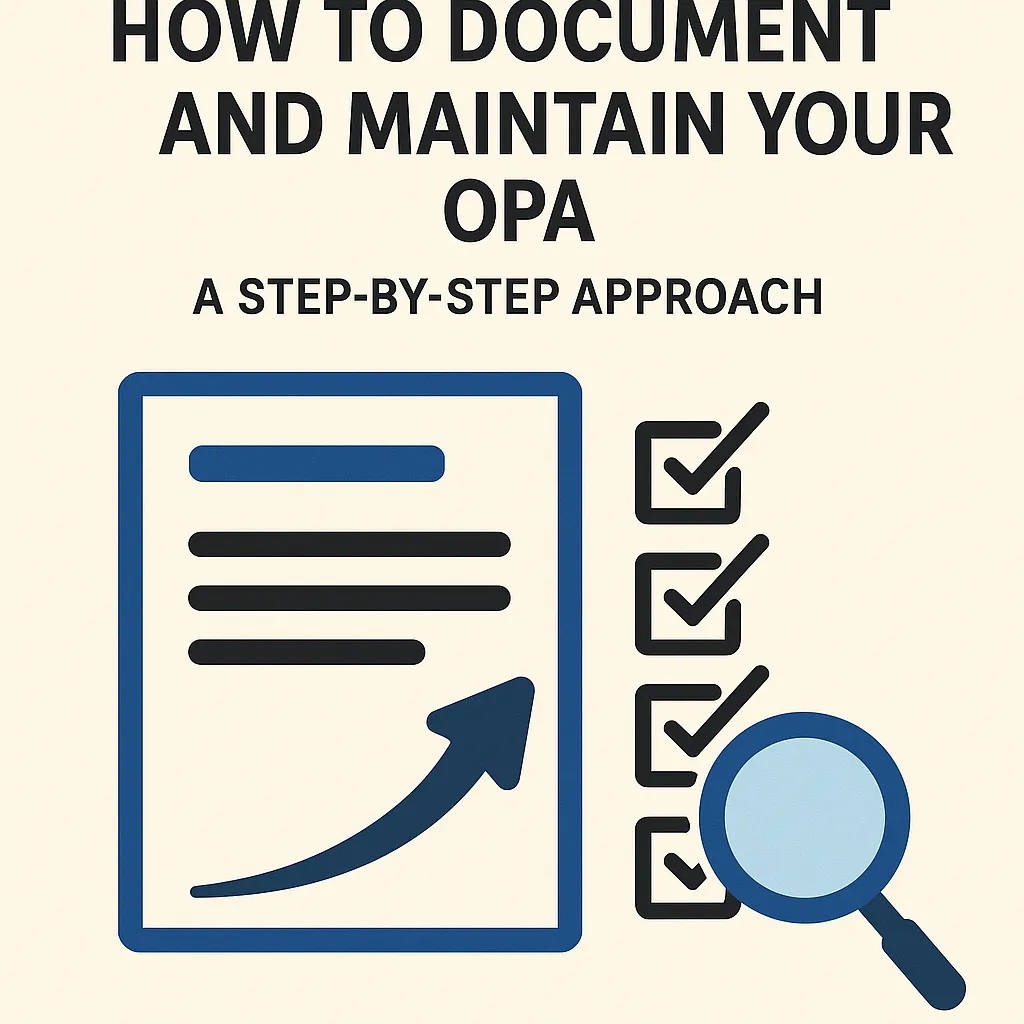Introduction to Organizational Process Assets (OPAs)
Organizational Process Assets (OPAs) are essential components in project management, serving as a repository of knowledge and resources that organizations accumulate over time. These assets encompass both tangible and intangible elements that facilitate effective project execution and management.
- Definition of OPAs: OPAs include a wide range of resources such as processes, policies, procedures, templates, tools, and historical data that an organization has developed and utilized throughout its project management endeavors. They represent the organization’s experiential knowledge and serve as a guiding framework for project managers [5][11].
- Role of OPAs in Project Management: In project management, OPAs play a critical role by providing structured support that enhances decision-making and project execution. They help project managers to leverage past experiences, ensuring that lessons learned from previous projects are integrated into current practices. This not only aids in anticipating challenges but also in implementing effective mitigation strategies [1][12]. By utilizing OPAs, project managers can streamline processes, adhere to established policies, and maintain consistency across projects, ultimately leading to improved project outcomes.
- Benefits of Documenting and Maintaining OPAs: Effectively documenting and maintaining OPAs offers numerous advantages. Firstly, it creates a centralized knowledge base that can be easily accessed by project teams, fostering collaboration and continuity. Secondly, well-documented OPAs enhance organizational learning by capturing lessons learned and best practices, which can be invaluable for future projects [4][10]. Additionally, maintaining up-to-date OPAs ensures that project teams are equipped with the latest methodologies and tools, thereby increasing efficiency and reducing the likelihood of errors. Overall, the diligent management of OPAs contributes to smoother project execution and promotes a culture of continuous improvement within the organization [3][12].
Types of OPAs
Organizational Process Assets (OPAs) play a crucial role in ensuring the success and efficiency of projects. Understanding the different types of OPAs and how to document and maintain them is essential for project managers and documentation specialists. Below, we categorize the main types of OPAs, provide examples, and discuss their importance in enhancing project success.
Main Types of OPAs
Processes
- Definition: These are the established methods and workflows that guide project execution.
- Examples:
- Project management methodologies (e.g., Agile, Waterfall)
- Risk management processes
- Quality assurance processes
- Importance: Well-defined processes help standardize project execution, reduce variability, and ensure that all team members are aligned with the project goals, ultimately leading to improved efficiency and outcomes [1][5].
Policies
- Definition: Policies are the formal guidelines that govern project activities and decision-making.
- Examples:
- Organizational policies on project funding
- Compliance policies related to industry regulations
- Communication policies outlining stakeholder engagement
- Importance: Policies provide a framework for decision-making and ensure that projects adhere to organizational standards and legal requirements, which can mitigate risks and enhance accountability [1][8].
Procedures
- Definition: Procedures are the specific steps or instructions that must be followed to complete tasks within a project.
- Examples:
- Change management procedures
- Project initiation procedures
- Reporting procedures for project status updates
- Importance: Clear procedures help team members understand their roles and responsibilities, reduce confusion, and ensure that tasks are completed consistently and correctly, which is vital for project success [1][10].
Knowledge Bases
- Definition: Knowledge bases are repositories of information, lessons learned, and historical data that can be referenced for future projects.
- Examples:
- Lessons learned databases from previous projects
- Templates and checklists for project planning
- Historical project performance data
- Importance: Knowledge bases serve as valuable resources for project teams, enabling them to learn from past experiences, avoid repeating mistakes, and apply best practices, thereby enhancing overall project performance [1][12][13].
The Importance of Documenting OPAs
Documenting Organizational Process Assets (OPAs) is a critical practice in project management that significantly contributes to the overall success and efficiency of projects. Here are some key points that highlight the necessity for proper documentation of OPAs:
- Supports Project Consistency and Quality: Proper documentation of OPAs ensures that project teams have access to standardized processes, templates, and guidelines. This consistency helps in maintaining quality across various projects by providing a clear framework that team members can follow. When everyone adheres to documented processes, it reduces variability and enhances the predictability of project outcomes, leading to higher quality deliverables [4][14].
- Enhances Stakeholder Communication: Well-documented OPAs serve as a valuable communication tool among stakeholders. They provide a common reference point that can be used to align expectations and clarify project objectives. By having a clear documentation of processes and historical data, project managers can effectively communicate progress, challenges, and changes to stakeholders, fostering transparency and trust [7][14]. This is particularly important in complex projects where multiple stakeholders are involved, as it helps in managing their expectations and ensuring everyone is on the same page.
- Facilitates Lessons Learned and Continuous Improvement: Documenting OPAs plays a vital role in capturing lessons learned from past projects. This knowledge repository includes project metrics, key takeaways, and historical data that can be referenced in future projects. By analyzing this information, organizations can identify areas for improvement and implement changes that enhance project performance over time [13][14]. Continuous improvement is essential in project management, and well-documented OPAs provide the foundation for learning from past experiences and applying those lessons to future endeavors.
Step 1: Identify Your OPAs
Identifying Organizational Process Assets (OPAs) is a crucial first step in effectively documenting and maintaining them. OPAs encompass a variety of resources, including templates, guidelines, and historical data that can significantly enhance project management efficiency. Here’s a practical guide to help project managers and documentation specialists recognize the OPAs they currently possess or may need.
Methods for Identifying Existing OPAs
- Review Historical Project Documentation: Start by examining past project files, reports, and documentation. Look for templates, lessons learned, and any standardized processes that were utilized. This historical data serves as a foundation for identifying existing OPAs that can be reused or adapted for future projects [5][9].
- Conduct a Process Audit: Perform an audit of current project management processes to identify any existing OPAs. This involves evaluating the tools, techniques, and methodologies currently in use, and determining which of these can be classified as OPAs. This audit can reveal gaps in documentation and highlight areas for improvement [6][10].
- Utilize Checklists: Create or use existing checklists that outline common types of OPAs, such as templates, guidelines, and lessons learned repositories. This structured approach can help ensure that no potential asset is overlooked during the identification process [4][8].
Stakeholder Involvement in Identifying OPAs
- Engage Project Teams: Involve project team members in discussions about OPAs. They can provide insights into what resources they have found useful in past projects and what they believe should be documented. This collaborative approach not only helps in identifying OPAs but also fosters a culture of knowledge sharing within the organization [2][12].
- Consult with Stakeholders: Stakeholders, including project sponsors and clients, can offer valuable perspectives on what OPAs are necessary for project success. Their input can help prioritize which assets should be documented based on their relevance and utility in achieving project objectives [3][11].
- Facilitate Workshops: Organize workshops or brainstorming sessions with key stakeholders to collectively identify OPAs. These sessions can encourage open dialogue and collaboration, leading to a more comprehensive understanding of the assets that are available or needed [1][10].
Involve project team members in discussions about OPAs. They can provide insights into what resources they have found useful in past projects and what they believe should be documented. This collaborative approach not only helps in identifying OPAs but also fosters a culture of knowledge sharing within the organization [2][12].
Tools and Techniques for Capturing OPAs
- Knowledge Management Systems: Implement knowledge management tools that allow for the easy capture and storage of OPAs. These systems can facilitate the organization of templates, guidelines, and lessons learned, making them easily accessible for project teams [5][10].
- Document Management Software: Utilize document management software to systematically document and categorize OPAs. This software can help maintain version control and ensure that all team members have access to the most current and relevant information [6][8].
- Collaboration Platforms: Leverage collaboration tools that enable team members to contribute to the documentation of OPAs in real-time. These platforms can enhance communication and ensure that knowledge is captured as it is generated [4][11].
By following these steps, project managers can effectively identify and document their OPAs, laying a solid foundation for improved project management practices. This proactive approach not only enhances project efficiency but also promotes a culture of continuous learning and adaptation within the organization.
Step 2: Categorize and Organize OPAs
Organizing Organizational Process Assets (OPAs) is crucial for ensuring that project managers and documentation specialists can easily access and utilize these resources. A well-structured OPA system enhances efficiency and supports effective project management. Here’s a practical guide on how to categorize and organize OPAs effectively.
Criteria for Categorizing OPAs
- By Project Phase: Categorizing OPAs according to the different phases of a project (Initiation, Planning, Execution, Monitoring, and Closing) allows project teams to quickly locate relevant documents and templates that correspond to their current stage. This approach ensures that the right tools are available at the right time, facilitating smoother transitions between phases [1].
- By Type: Another effective method is to categorize OPAs by their type, such as templates, historical data, policies, and procedures. This classification helps in identifying specific resources needed for particular tasks, making it easier for project managers to find what they need without sifting through unrelated documents [2].
- By Project Size or Complexity: Consider categorizing OPAs based on the size or complexity of the projects they pertain to. This can help teams quickly access resources that are tailored to their specific project requirements, whether they are managing a small initiative or a large-scale program [3].
Suggested Organizational Structures
- Databases: Utilizing a database system for OPAs can provide a centralized repository where all assets are stored. This allows for advanced search capabilities, making it easier to retrieve documents based on various criteria such as keywords, project phases, or types. Databases can also facilitate version control, ensuring that the most current documents are always accessible [4].
- Folders: A more traditional approach involves creating a structured folder system on a shared drive or cloud storage. Organizing folders by categories such as project phases or types can help maintain clarity. For instance, you might have main folders for each project phase, with subfolders for specific types of OPAs (e.g., templates, risk registers) within each phase [5].
- Tagging Systems: Implementing a tagging system can enhance the organization of OPAs. Tags can be used to label documents with relevant keywords, making it easier to filter and search for specific assets. This method allows for flexibility, as documents can be tagged with multiple relevant categories [6].
Importance of a Consistent Naming Convention
Establishing a consistent naming convention for OPAs is vital for maintaining organization and usability. A clear naming system helps users quickly identify the content and purpose of each document. Here are some best practices for naming conventions:
- Descriptive Titles: Use clear and descriptive titles that reflect the content of the document. For example, instead of naming a file “Template1,” use “Project_Initiation_Template” to provide immediate context [7].
- Version Control: Include version numbers in the file names to track updates and changes. For instance, “Risk_Register_v2.0” indicates that this is the second version of the risk register [8].
- Date Stamps: Incorporating date stamps in the naming convention can help users identify the most recent documents. For example, “Meeting_Notes_2025-01-08” clearly indicates when the notes were created [9].
By categorizing and organizing OPAs effectively, project managers and documentation specialists can enhance their workflow, improve accessibility, and ultimately contribute to the success of their projects. A structured approach not only saves time but also fosters a culture of efficiency and consistency within project teams.
Step 3: Document OPAs Effectively
Documenting Organizational Process Assets (OPAs) is a critical step in project management that ensures knowledge is captured and can be leveraged for future projects. Here are practical tips for creating clear and concise documentation that will benefit project managers and documentation specialists alike.
Guidelines for Writing Clear and Accessible Documentation
- Use Simple Language: Aim for clarity by using straightforward language. Avoid jargon unless it is commonly understood within your organization. This ensures that all team members, regardless of their experience level, can comprehend the documentation easily.
- Be Concise: Keep your documentation focused and to the point. Long-winded explanations can lead to confusion. Use bullet points and numbered lists to break down complex information into digestible parts, making it easier for readers to follow.
- Organize Logically: Structure your documentation in a logical manner. Start with an overview of the OPA, followed by detailed sections that cover specific aspects. This helps readers navigate the document efficiently and find the information they need quickly.
Use of Templates and Tools to Streamline Documentation
- Standardized Templates: Implementing standardized templates can significantly enhance the efficiency of your documentation process. Templates provide a consistent format that can be reused across different projects, ensuring uniformity and saving time. This is particularly beneficial for documenting processes, lessons learned, and risk management strategies [4][5].
- Documentation Tools: Utilize project management and documentation tools that facilitate collaboration and version control. Tools like Confluence, SharePoint, or even Google Docs allow multiple team members to contribute and edit documentation in real-time, ensuring that the most current information is always available [10].
- Version Control: Maintain a version history for your documentation. This allows you to track changes over time and ensures that you can revert to previous versions if necessary. It also helps in understanding the evolution of your OPAs and the rationale behind changes made [11].
Importance of Including Context and Examples
- Contextual Information: Providing context is essential for understanding the relevance of the documented OPAs. Include background information about the project or process, the challenges faced, and how the OPA addresses those challenges. This helps future project teams grasp the significance of the documentation and apply it effectively [12].
- Real-World Examples: Incorporate examples from past projects to illustrate how the OPAs were utilized in practice. This not only makes the documentation more relatable but also serves as a practical guide for project managers on how to implement the strategies outlined in the OPAs [14].
- Lessons Learned: Documenting lessons learned is a vital component of OPAs. Include insights gained from previous projects, detailing what worked well and what didn’t. This repository of knowledge acts as a valuable resource for future projects, helping teams avoid past mistakes and replicate successes [3][8].
By following these guidelines, project managers and documentation specialists can create effective and accessible documentation for OPAs. This not only enhances project efficiency but also fosters a culture of continuous improvement within the organization, ultimately leading to more successful project outcomes.
Step 4: Maintain and Update OPAs Regularly
Maintaining and updating Organizational Process Assets (OPAs) is crucial for ensuring that they remain relevant and effective in supporting project management practices. Regular reviews and updates not only enhance the quality of the documentation but also ensure that the knowledge captured within OPAs reflects the latest best practices and lessons learned. Here are some key points to consider for effective OPA maintenance:
- Need for Regular Reviews and Updates: OPAs serve as the institutional memory of an organization, encapsulating lessons learned, best practices, and historical data. To keep this information valuable, it is essential to conduct regular reviews. This process allows project managers to identify outdated practices, incorporate new insights, and ensure that the documentation aligns with current organizational standards and industry trends. Regular updates help in maintaining the integrity and usefulness of OPAs, ultimately leading to improved project outcomes [1][4].
- Outline a Schedule for Maintenance: Establishing a clear maintenance schedule is vital for systematic updates. A recommended approach could include:
- Quarterly Reviews: Conducting reviews every three months can help in capturing immediate feedback and changes from ongoing projects. This frequency allows for timely adjustments to processes and templates based on recent experiences.
- Annual Comprehensive Audits: An in-depth review once a year can provide a broader perspective on the effectiveness of OPAs. This audit should assess the overall relevance of the assets, ensuring they meet the evolving needs of the organization and incorporate any significant changes in project management methodologies or regulations [2][6].
- Importance of Feedback from Project Teams: Engaging project teams in the maintenance process is essential. Their firsthand experience with OPAs provides valuable insights into what works and what doesn’t. Regularly soliciting feedback from team members can highlight areas for improvement and ensure that the documentation reflects practical realities. This collaborative approach not only enhances the quality of OPAs but also fosters a culture of continuous improvement within the organization [3][5].
By prioritizing the regular maintenance and updating of OPAs, organizations can ensure that their project management practices remain efficient, consistent, and aligned with best practices. This proactive approach not only enhances project performance but also contributes to the overall success of the organization.
Step 5: Share and Communicate OPAs with Stakeholders
Effectively sharing and communicating Organizational Process Assets (OPAs) is crucial for ensuring that all relevant stakeholders are aware of and can access these valuable resources. Here are some practical methods and considerations for project managers and documentation specialists to enhance the sharing of OPAs:
Methods for Sharing OPAs
- Centralized Repository: Establish a centralized digital repository where all OPAs are stored. This could be a project management software or a shared drive that is easily accessible to all team members and stakeholders. Regular updates should be made to ensure that the repository reflects the most current information [1][4].
- Regular Updates and Notifications: Implement a system for regular updates on OPAs. This could include scheduled emails or newsletters that inform stakeholders about new or revised assets. Keeping stakeholders informed helps maintain engagement and ensures they are aware of the latest tools and templates available [6][13].
- Workshops and Training Sessions: Organize workshops or training sessions to introduce stakeholders to the OPAs. These sessions can provide hands-on experience with the tools and templates, allowing stakeholders to understand their practical applications [3][8].
Importance of Training on How to Use OPAs
Training is essential for maximizing the effectiveness of OPAs. It ensures that stakeholders not only have access to these resources but also understand how to utilize them effectively. Key aspects of training include:
- Tailored Training Programs: Develop training programs that are tailored to the specific needs of different stakeholder groups. For instance, project managers may require in-depth training on project templates, while team members may benefit from a focus on tracking tools and communication protocols [5][10].
- Documentation and Guides: Provide comprehensive documentation and user guides that outline how to use each OPA. This can serve as a reference for stakeholders and help them navigate the resources independently [2][9].
Role of Communication in Fostering a Culture of Knowledge Sharing
Effective communication is vital in fostering a culture of knowledge sharing within an organization. Here are some strategies to enhance communication regarding OPAs:
- Open Channels for Feedback: Create open channels for feedback where stakeholders can share their experiences and suggestions regarding OPAs. This not only improves the assets but also encourages a collaborative environment [7][12].
- Highlight Success Stories: Share success stories and case studies that demonstrate the effective use of OPAs in past projects. This can motivate stakeholders to engage with the resources and see their value in achieving project goals [11][14].
- Encourage Continuous Improvement: Promote a mindset of continuous improvement by regularly reviewing and updating OPAs based on stakeholder feedback and project outcomes. This ensures that the assets remain relevant and effective over time [13].
By implementing these strategies, project managers and documentation specialists can ensure that OPAs are not only documented effectively but also shared and communicated in a way that enhances their utility and fosters a culture of knowledge sharing within the organization.
Conclusion
The significance of documenting and maintaining Organizational Process Assets (OPAs) cannot be overstated. OPAs serve as a vital repository of knowledge, encompassing policies, procedures, templates, and lessons learned from past projects. This documentation not only aids in project planning and execution but also fosters a culture of continuous improvement and knowledge sharing within teams. By effectively managing OPAs, project managers can enhance transparency, accountability, and overall project success [7][10].
As we have outlined in this guide, implementing a structured approach to documenting OPAs involves several key steps, including identifying relevant assets, standardizing documentation practices, and regularly reviewing and updating these resources. By following these steps, project managers can ensure that their OPAs remain relevant and useful, ultimately leading to more efficient project execution and better outcomes [1][8][14].
Find out more about Shaun Stoltz https://www.shaunstoltz.com/about/.
This post was written by an AI and reviewed/edited by a human.



